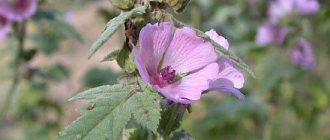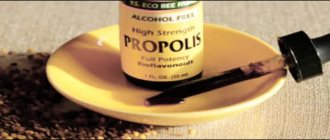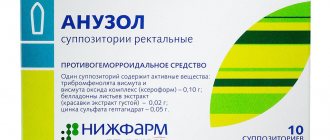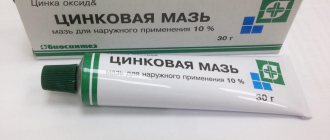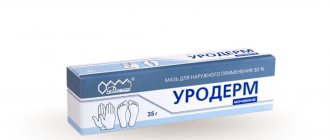Yarrow, whose beneficial properties and contraindications for women and men are described in this article, is a perennial herb belonging to the Asteraceae family. Distributed almost everywhere. Its beneficial properties are highly valued by herbalists and fans of natural methods of treating diseases.
Other names for yarrow are whitehead, cutleaf and others. Military doctors call it a tenacious herb for its invaluable medicinal properties. In case of serious wounds and injuries, yarrow can save life.
The plant has a characteristic smell that is unmistakably recognizable. Once you recognize it, it is impossible to confuse the smell with anything else. Currently, yarrow is widely used by healers; its healing qualities are also recognized by official medicine. The qualities of this herb have been well studied.
By applying this knowledge, you can cure certain diseases without using drugs of synthetic origin. This is especially valuable if intolerance to certain medications occurs.
What it looks like and where it grows
Common yarrow is a perennial plant that is most often found in steppe zones, forest meadows and bushes. It has straight stems up to 120 cm tall. The leaves are long, lanceolate and dissected into many pinnate segments, hence the name of the herb. Inflorescences are large baskets consisting of small white and pink buds with yellow cores.
Yarrow blooms from the beginning to the end of summer
The grass grows throughout the world in temperate climates. It can be seen throughout most of Russia, Europe, and North America. The plant is cultivated in Asia and Australia.
Which medicinal yarrow is pink or white?
If you study the common yarrow with its medicinal properties, contraindications and photos, it becomes clear that both pink and white flowers are used in medicine, although the latter are more common. Both types of raw materials contain useful substances.
Description
- Yarrow has a branched root that grows to the sides.
- The stems are erect, can be pubescent, up to 80 cm high.
- The leaves are linear or lanceolate, they are dissected into segments.
- Yarrow blooms with small white or pink flowers, which are basket-like inflorescences.
Most often, this grass is found at the edge of a meadow, along the edges of fields, in settlements. The plant is found throughout almost the entire European territory of the country, in Siberia and the Caucasus.
Chemical composition of yarrow
The plant contains:
- vitamins C and K;
- amino acids and esters;
- bitterness and resinous substances;
- camphor and borneol;
- chamazulene;
- glycosides;
- tanning components;
- zinc, copper;
- potassium and magnesium;
- thujone;
- Achillein is a valuable alkaloid;
- selenium and boron;
- carotene;
- molybdenum;
- calcium;
- organic acids;
- substance cineole.
Important! Due to the glycosides and alkaloids in the composition, the medicinal properties of yarrow root, its leaves and flowers are accompanied by mild toxicity. Products should be used with caution.
Compound
The herb contains:
- essential oil containing a large amount of chamazulene,
- esters,
- camphor,
- glycosides (luteolin and apigenin),
- tannins,
- alkaloid achillein,
- borneol,
- thujone,
- organic acids,
- cineole,
- carotene,
- resins,
- vitamins K, C,
- bitterness.
Rich in mineral content:
- magnesium,
- potassium,
- boron,
- zinc,
- calcium,
- selenium,
- copper,
- molybdenum.
The flavonoids present in it may have beneficial effects on the intestines. They will relieve spasms and reduce the formation of gases.
Achillesin, which the herb contains, will increase appetite. It irritates the taste buds. For this reason, yarrow is recommended for children with poor appetite. It is prepared as a decoction and a little honey is added to it to mask the slight bitterness.
The plant is used as a hemostatic agent because it contains choline. In this case, blood clots do not form. This is especially highly valued, since it allows the plant to be used even during heart attacks and strokes. Thrombophlebitis will also not be an obstacle to taking yarrow.
The anti-inflammatory effect of the herb is due to the presence of tanning components and essential oils. In this regard, yarrow is indispensable for the treatment of atopic and allergic dermatitis, helps with burns and suppuration of wounds.
Doctors recommend it as a sedative and sedative.
What diseases does yarrow treat and what does it help with?
Yarrow is beneficial for the human body for a wide range of diseases. Among the indications for the use of herbs, traditional medicine names:
- bleeding - internal and external, except arterial;
- chronic and acute infections;
- atherosclerosis;
- cystitis and glomerulonephritis;
- pyelonephritis;
- pancreatitis;
- hepatitis and gallbladder diseases;
- intestinal colitis and dysentery;
- peptic ulcer;
- acne and boils;
- diathesis and eczema;
- obesity.
The herb can be used for traumatic skin injuries - burns, wounds and abrasions. It also benefits hair loss.
Medicinal properties of yarrow flowers
The flowers of a perennial plant have pronounced healing powers. When used for medicinal purposes, yarrow:
- has anti-inflammatory and antimicrobial effects;
- helps with intestinal disorders and stops diarrhea;
- promotes rapid healing of cuts and suppurations;
- accelerates digestion and metabolic processes;
- has an antipyretic effect;
- strengthens the walls of blood vessels and normalizes phospholipid metabolism;
- removes toxic substances and waste from the body.
Indications for the use of yarrow herb also include diabetes mellitus and a tendency to bleed.
Is it possible to drink yarrow decoction and what does it help with?
For diseases, yarrow is usually taken in the form of water infusions and decoctions. Making drinks based on raw materials is not only possible, but also very useful. If proven algorithms are followed, medicines retain all valuable substances and help with inflammatory diseases, digestive disorders, and circulatory disorders.
The healing properties of yarrow for children
The healing properties of yarrow are used for nosebleeds in children, severe colds and abdominal pain. However, offering plant-based products to children under 6 years of age is strictly prohibited. The herb can have a negative effect on the central nervous system, provoke the development of hypotension and damage the health of the joints. If necessary, older children are allowed to be given light teas with a weak concentration.
The dosage of medicinal tea for a child for the first time should not exceed 20 ml
Attention! The herb has strict contraindications and can cause allergies. Before offering it to your child, you should consult your pediatrician.
The healing properties of yarrow for men
Men are recommended to drink herbal drinks for inflammatory diseases of the genitourinary system. The plant helps with prostatitis and urethritis, prevents the development of tumors. Baths with decoctions and infusions are indicated for sexually transmitted infectious diseases.
What are the benefits of yarrow herb for women?
The beneficial properties and contraindications of yarrow for women are of interest in gynecology. The herb is used to treat mastopathy, thrush and tumors. Decoctions and infusions normalize hormonal levels, improve well-being during menopause and painful menstruation. When using the herb, libido increases, vigor and general tone are maintained.
We recommend reading: Beneficial properties of hedgehog: yellow, variegated, corral
Is it possible to drink yarrow during pregnancy?
During the period of bearing a child, taking infusions and decoctions of medicinal plants is strictly prohibited. The herb can not only lead to miscarriage, but also contribute to the development of congenital diseases of the central nervous system and skeletal system in the fetus. In the third trimester, taking the plant increases the risk of thrombosis in a woman.
Is it possible to drink yarrow during menstruation?
The medicinal properties of yarrow herb in gynecology improve blood clotting; the plant is often used to stop bleeding. It can be used when menstruation is too heavy and painful. The herb will help minimize blood loss and prevent the development of anemia.
Is it possible to drink yarrow for pancreatitis?
The medicinal plant has a beneficial effect on the pancreas. When consumed correctly, it normalizes the production of digestive enzymes, prevents inflammation and protects the organ from irritation by bacteria and toxins.
You can use medicinal herbs for pancreatitis only during the period of remission. In the acute phase of the disease, any decoctions and infusions should be excluded.
Is it possible to drink yarrow for gastritis?
The medicinal properties of common yarrow speed up digestive processes and improve appetite. The herb is of great benefit for gastritis with reduced production of gastric juice. It eliminates heaviness in the stomach and promotes rapid and high-quality absorption of food.
In case of high-acid gastritis, decoctions should be avoided, they will irritate the mucous membranes
How to make yarrow tea for weight loss
Yarrow helps improve metabolic processes, in particular enhances fat metabolism. This feature explains its use for weight loss. It also has a diuretic and choleretic effect, as a result of which excess fluid is removed from the body and the functioning of the gastrointestinal tract improves.
There is a special type of diet based on yarrow decoction. Its essence lies in healthy eating and taking infusion. The diet should be based on vegetables. It is allowed to eat lean meat and fish (not fried), whole grain or bran bread. Smoked, salty and spicy foods, sweets and fast food should be excluded. Meals during the diet should be 5 times a day.
The decoction for weight loss is prepared according to the classic recipe. 1 glass of the product should be divided into a daily diet, that is, 1/5 glass before each meal. The duration of this diet is 2 weeks, after which you need to take a break of 2 to 3 weeks.
In addition, an effective remedy for weight loss is tea with the addition of wormwood, tansy and buckthorn.
Recipe for tea with the addition of wormwood, tansy and buckthorn for weight loss
- Yarrow
- Oak bark
- Sagebrush
- Buckthorn
- Tansy
Mix the ingredients in equal parts. 1 tbsp. l. pour 200 ml of boiling water over the mixture. Leave for 10 minutes. Drink a glass of infusion on an empty stomach half an hour before breakfast.
Methods of preparation and use
The medicinal properties of yarrow, when used at home, are fully revealed in several herbal-based products. Traditional medicine mainly suggests subjecting the plant to heat treatment, but juice or gruel also brings benefits.
Fresh Juice
To obtain juice, you need to chop and then squeeze the fresh herb of the plant through gauze. The bitter liquid released will help with external and internal bleeding, with arrhythmia and anemia, and with coughing. Take it one small spoon three times a day.
Yarrow leaves need to be washed before extracting juice.
Infusion
The water infusion is prepared according to the following recipe:
- a large spoonful of dry grass is crushed;
- pour 500 ml of boiling water;
- Cover the container with a lid and wrap it in a towel.
The liquid must be infused for an hour and then filtered. Reviews and videos about the use of yarrow herb highly value the remedy as a cure for ARVI, digestive inflammation and uterine bleeding.
You need to drink yarrow infusion 150 ml three times a day
Advice! Warm infusion can be used to wash wounds and abrasions.
Tea
Natural tea based on the plant has a weak concentration and is approved for use, including for children. Prepare the drink like this:
- pour a large spoonful of dry leaves into a glass of boiling water;
- keep covered for half an hour;
- filter through cheesecloth.
6
Yarrow tea is best drunk on an empty stomach.
You can take a glass of tea for colds and inflammation three times a day.
How to brew yarrow decoction correctly
In folk medicine, treatment with yarrow in the form of a concentrated decoction is carried out for diabetes and gastritis. It is prepared like this:
- pour a large spoon of raw material into a glass of water;
- bring the product to a boil over the fire;
Then the drink is removed from the stove and left for another half hour.
The strained decoction should be taken three times a day, 100 ml.
Ointment
To prepare the ointment, the washed leaves are thoroughly crushed in a blender and then mixed with heated pork fat or regular petroleum jelly in equal proportions. The homogeneous mixture is placed in the refrigerator to harden.
The ointment can be used for ulcers and infectious rashes
Baths
For scabies, scaly lichen, eczema and other skin diseases, the herb can be used for medicinal baths. It is necessary to prepare a standard decoction, and then add it to a container filled with hot water in a volume of 1-2 liters.
You can take baths with yarrow for no longer than 15 minutes.
Yarrow herb for gynecology in women
Yarrow is effective in the treatment of gynecological diseases. Its decoctions and infusions are used for uterine bleeding, fibroids and inflammatory processes in the uterus. The plant helps increase the number of platelets, which will significantly reduce blood loss.
For all types of bleeding
- Yarrow;
- Dandelion root;
- Nettle.
Preparation: take herbs in equal proportions. 1 tbsp. l. collection, pour 200 ml of boiling water. After 3 hours of infusion, strain and squeeze out the sediment. Reception: 2 tbsp. l. means half an hour before meals in 3 doses during the day. Course of treatment: 2 weeks.
For heavy periods
- Poreznik – 2 tbsp. l.
- Boiling water – 200 ml.
Preparation: Grind the main ingredient and pour boiling water over it. Let it brew for 30 minutes. Take 1 tbsp. l. in three steps.
For neoplasms in the uterus (fibroids, fibroids)
- Dried yarrow herb;
- Nettle.
Preparation: mix herbs in equal parts, 1 tbsp. l. collection, pour 250 ml of boiling water. It is better to do this in a thermos. Or just wrap the container with the infusion well. Let it brew for about 2 hours. Reception: 0.5 cups in the morning, lunch and evening.
For cycle disorders
- Oak bark – 10 g;
- Potentilla root – 10 g;
- Shepherd's purse – 25 g;
- Yarrow – 25 g.
Preparation: mix the herbs thoroughly, pour 10 g of the resulting mixture with 1 glass of boiling water. Wrap well and leave for 2 hours. Take 1 tbsp. l. 3 times a day.
Attention! In the process of preparing and using infusions, the dosage must be strictly observed. Excessive concentration can lead to negative reactions in the body.
Cervical erosion
If the integrity of the cervix is damaged, the herbal infusion is recommended to be consumed in the form of tea. For this, 2 tbsp. l. dry plant is brewed in 2 liters of water. In parallel with internal use, douching should be carried out. For it you need to prepare a decoction according to the classic recipe. Bring to a boil and leave for an hour. The course of treatment with douching is 3 weeks. It is better to carry out the procedure at night.
Spontaneous abortion
After a miscarriage, taking yarrow infusion helps improve blood circulation and has an astringent effect. Thanks to the diaphoretic properties of the plant, toxins are removed from the body. In addition, the cutter activates the production of estrogen, which allows the uterus to contract and completely cleanse itself.
The use of yarrow herbs and flowers in folk medicine
There are many ways to use yarrow with its beneficial properties and contraindications. Traditional medicine offers effective and safe herbal recipes.
How to take yarrow infusion
An aqueous infusion from a medicinal plant is often used to treat coughs and bronchitis, to stimulate appetite and speed up digestive processes. One of the recipes suggests:
- pour 15 g of finely chopped herbs with 200 ml of warm water;
- simmer covered in a water bath for 15 minutes;
- strain and stand for another 45 minutes.
The finished infusion is topped up to the original volume and taken four times a day with a large spoon.
How to take and for how long can you drink yarrow decoction?
A decoction of yarrow is taken for diseases of the kidneys, respiratory tract and intestines. To prepare the product according to one of the recipes you need:
- leave the crushed leaves in cold water for several hours;
- Boil on fire under the lid for 30 minutes;
- filter and cool until warm.
Take a decoction of no more than 100 ml, and you can drink three servings of the medicine per day. Long-term use of a home remedy may cause side effects. In total, you should use the decoction for medicinal purposes no longer than two weeks in a row.
How to brew and take yarrow for the stomach and intestines
The use of yarrow decoction for gastritis in the non-acute phase helps eliminate pain and discomfort in the stomach and intestines. Prepare the following infusion:
- grind a small spoon of dry herb;
- Brew 500 ml of boiling water for 15 minutes.
The strained product is taken in a large spoon 20 minutes before meals.
How to take yarrow decoction for pancreatitis of the pancreas
In chronic pancreatitis, the medicinal herb helps support pancreatic function and prevent another exacerbation. You can prepare this remedy:
- yarrow, calendula and corn silk are mixed together in a small spoon;
- pour 200 ml of water into a large spoon;
- bring to a boil, and then leave for four hours and filter.
We recommend reading: Properties and uses of jojoba essential oil
Take the product twice a day, 150 ml.
Pancreatitis can be treated with yarrow only during a calm period of the disease.
Use of yarrow for hemorrhoids
The medicinal properties of yarrow for hemorrhoids are most often used externally. For example, healing lotions have a good effect. They do it like this:
- a piece of clean cloth or gauze is moistened in a regular decoction of the plant;
- apply a compress to the anal area for 20 minutes.
The procedure must be repeated three times a day. In addition, warm baths with the addition of decoction are of great benefit.
Yarrow for oncology
Yarrow can be taken for stomach cancer - an infusion is prepared for this. The recipe looks like this:
- pour a large spoonful of dry raw material into a glass of hot water;
- heat for ten minutes under a lid in a water bath;
- remove from heat and leave for 45 minutes.
The finished product is added to a glass with clean water and taken 80 ml three times a day on an empty stomach.
Attention! You can use medicinal herbs for cancer only with the permission of the oncologist and in combination with medications.
Yarrow for the liver
For liver diseases, it is useful to use the plant in combination with honey and other natural ingredients. Traditional medicine offers the following recipe:
- 200 g of honey are heated in a water bath;
- add a small spoon of chopped yarrow herb;
- add two large spoons of corn silk and milk thistle seeds;
- Allow the product to harden without straining it.
You need to take the mixture three times a day, a small spoon on a full stomach.
Yarrow for cystitis
For cystitis in women, the medicinal plant is used to prepare an infusion. You can use this recipe:
- brew two small spoons of herb in a glass of hot water;
- leave covered for an hour;
- pass the finished infusion through cheesecloth.
When warm, the product is consumed four times a day, 1/4 cup.
How to brew yarrow depending on temperature for children
At elevated temperatures in children over six years of age, you can prepare a healing mixture using yarrow. They do it like this:
- 3/4 large spoon of dry herb is mixed with 10 dried linden flowers;
- pour 500 ml of boiling water;
- after seven minutes, add a few slices of lemon.
The product, cooled to a warm state, is offered to the child twice a day.
You can add a little honey to your child’s medicinal mixture.
The benefits and harms of yarrow tea are optimally balanced; a drink with a weak concentration does not lead to negative effects.
Yarrow to improve potency
When potency weakens in men, instructions for using yarrow tincture are in demand. The remedy is prepared as follows:
- two large spoons of dry grass and flowers are poured into a glass of vodka;
- leave in a warm and dark place for a week;
- After the expiration date, strain.
You need to take the medicine 20 drops three times a day on an empty stomach.
Beneficial features
The chemical composition of the plant contains many useful substances. It is distinguished by a significant content of tannins, vitamins, acids, resins and alkaloids. Also rich in minerals such as potassium, magnesium, calcium, zinc.
Due to its composition, yarrow has a wide range of effects on the body. Its beneficial properties include:
- wound healing;
- stops bleeding;
- prevents the development of inflammation;
- has an antibacterial effect;
- helps reduce blood pressure;
- removes bile;
- helps strengthen the immune system.
The tenacious herb is used to treat various diseases. It is used externally, orally, and in the form of enemas.
Medicinal properties are used in the treatment of inflammatory processes in the gastrointestinal tract and oral cavity. Also for respiratory viral diseases and sore throat.
Herbal enemas help reduce symptoms of acute hemorrhoids.
The plant is often used in the form of decoctions, infusions, and alcohol tinctures.
Classic decoction recipe
- Yarrow – 1 tbsp. l.
- Water – 200 ml
Method of preparation: cover the plant with water. Boil for 5-10 minutes. Then cool and strain. The infusion is prepared using the same ingredients. The only difference is in the preparation method: the raw materials are poured with boiling water and allowed to brew for half an hour.
Alcohol tincture recipe
- Yarrow – 30 g
- Alcohol – ½ cup
Method of preparation: pour the raw material with alcohol and leave for 10 days. After this period has expired, strain and pour into a dark glass container. Close the lid tightly.
Depending on the purpose of use, classic recipes are supplemented with auxiliary ingredients.
Reference: The weight of 1 tablespoon of a dry plant is 15 grams, and 1 glass is equal to 200 ml of liquid.
Application in cosmetology
The health benefits and harms of yarrow are highly valued not only in folk medicine, but also in home beauty recipes:
- Fresh plant juice eliminates skin inflammation and helps cope with acne.
- Infusions and decoctions moisturize the skin and increase its elasticity. Water products are used for daily washing.
- Decoctions of the medicinal plant are used to rinse hair after washing. After such procedures, hair acquires a healthy shine and strength, stops falling out and becomes more manageable.
Attention! For the healing herb to be beneficial, it must be used on curls and skin on an ongoing basis.
Contraindications to the use of yarrow and side effects
The medicinal plant has quite a few contraindications. It cannot be used when:
- pregnancy;
- slow heart rate and hypotension;
- increased blood clotting and thrombosis;
- stomach ulcer;
- gastritis with high acidity in the acute phase;
- lack of magnesium and calcium in the body;
- temperature above 38 °C, which lasts more than a day.
It is forbidden to use yarrow simultaneously with diuretics. Overdose may cause nausea, itching, rash and dizziness. In this case, you should immediately stop taking home medications and consult a doctor.
Side effects and contraindications
With all the variety of beneficial properties, there are cases in which the use of yarrow is not recommended. Among them:
- thrombosis;
- allergy;
- pregnancy;
- excess production of acid in the stomach;
- hypotension.
Improper use and violation of dosage may cause adverse reactions. These include:
- itching, urticaria, burning;
- in case of overdose – heartburn, nausea, abdominal pain;
- Taking it for a long time may cause headaches and dizziness.
Important! Before using yarrow-based products, you should consult your doctor.
Collection and preparation
The flowers of the medicinal plant need to be collected from June to August. The leaves are cut off at the end of summer, when they have time to gain maximum nutrients.
The prepared raw materials are dried in the standard way in the fresh air, in the shade under a canopy. After all the moisture has evaporated, the grass is laid out in glass containers or linen bags and stored in a dark, dry place.
Yarrow remains suitable for use throughout the year.
